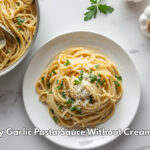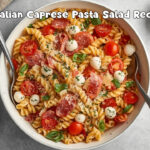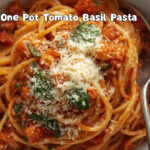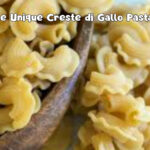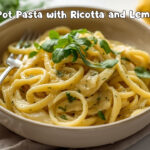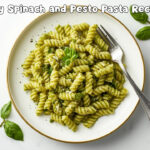Table of Contents
ToggleRadiatori pasta, the modernistic pasta shape, was invented by an industrial designer who worked for a pasta factory. It was named this because it looks a lot like old-school steam radiators. It is ridged with a curved shape and looks bigger in diameter. It is perfect for holding chunky and thick-meaty sauces like pesto, mac and cheese, or vodka sauce. The ruffled ridges give this pasta a fun texture and make it look beautiful in a serving dish.
You’ve probably realized there are a lot of pasta shapes in Italy! Here on the Pastasphere, we’ve only scratched the surface of the pasta world. Still, I aim to continue this loving journey of introducing different pasta types and unique recipes to wow your friends and family.
I hope this blog is a go-to place where you can discover delicious and unique pasta recipes and learn a little about the history and traditions behind each pasta shape. So, yes! Today, I will introduce you to the most unusual pasta type, Radiatori pasta, from the world of Italian pasta.
What makes radiator pasta unique?
How many pasta shapes are there, exactly? The number ranges from about 360 to over 400 pasta shapes or even more—which doesn’t even count all the different ways to prepare them!

Radiatori (rah-dee-ah-tor-ee) is one of the more recent kids in the Italian pasta world. They are short, chunky pasta shapes with ruffled edges that look like tiny radiators—hence the name! Some pasta experts say the radiator of a Bugatti car inspired this design. Compared to other classic pasta shapes, their cool, textured shape is perfect for holding onto sauces. This pasta goes excellent in soups, salads, or baked dishes.
Radiatori, straight from Italy
While most Italian pasta shapes have roots going back to Ancient Rome (or maybe even earlier!). There are a couple of different beliefs about the origins of radiatori pasta. Some say it was created between World War I and II, but most people strongly agree it was made in the 1960s, and the radiator grills of classic Bugatti cars inspired the shape! As we know, Italians love their car designs; that sounds believable!
What pairs well with it?
Radiatori is undoubtedly the “best all-rounder” in the pasta world. Because of its texture, squat shape, gluten content, and ridges, they can perfectly hold chunky and almost any sauce. Here are a few of our favorite radiatori pairings:
Radiatori with Pistachio Pesto

For this pistachio pesto recipe, we prefer to use a mortar and pestle and find it extremely easy to get a nice paste texture. It gives you better control over the texture in a reasonable amount of time. A food processor works, too; just be careful not to grind too much, as our pistachio pesto tastes best when left a little on the rustic side. The creamy and nutty consistency of pesto clings to your radiatori and perfectly coats every curve and exterior ridge.
Radiatori with a simple tomato and basil sauce

Sometimes, you want something easy and cozy. So far, no sauce can beat the simplicity and comfort of a classic tomato and basil combo. Pairing with radiatori pasta makes the perfect no-fuss weeknight dinner—pure comfort in a bowl.
Radiatori with rich beef-shin ragù

This rich ragù is often paired with pappardelle, but don’t hesitate to substitute longer pasta with radiatori. It holds its own beautifully and even more. Our slow-cooked beef shin ragù is enriched with velvety Barolo wine (known as “the King of Wines” in Italy). After a few hours of simmering, the beef becomes tender and gives melt-in-your-mouth feelings. Beef shin ragù is the perfect pairing for an al dente batch of freshly made radiatori.
Radiatori with Sausage and Olives

This bold, savory combo of crumbled sausage and olives is a match made in pasta heaven. Sausage and olive sauces might be served with penne or rigatoni, but the ridged texture of the radiator brings extra juicy sausage and briny olive goodness to the table. The hearty texture of the radiatori makes the dish beautifully balanced. The meaty flavor clings perfectly to each twist and ridge. Simple ingredients, big flavors!
Radiatori Pasta with ramps, sundried tomatoes, and peas

You always feel satisfied when keeping things simple, like tossing radiatori with good olive oil, pepper, a touch of salt, and a sprinkle of dried herbs. The aroma alone is enough to make your mouth water, but the chewy, squishy texture of radiatori enhances the joy of every bite. First, I made this dish when ramps were in season, and their garlicky bite matched the sweetness of sundried tomatoes and the pop of fresh peas. When ramps aren’t around, you can use scallions as a substitute. This light, flavorful dish is even better when enjoyed with a chilled glass of Pinot Grigio; what a fancy touch!
Conclusion
Pasta is divided into a few main categories: long, short, spiral pasta with ridges, and more. Though radiatori pasta falls into a small category, it can bring a big personality to any dish. The ruffled edges and sturdy shape perfectly hold onto sauces, from rich ragùs to light pestos. Whether you’re cooking something quick or slow-simmered, the radiatori adds texture, charm, and a bit of fun to every bite. It’s a true all-rounder in the pasta world!
Frequently asked questions
What is the difference between fusilli and radiatori?
Radiatori is an unusual pasta, closer but far superior to fusilli. Its ruffled edges hold sauces pretty well and are nicer for summer pasta, such as olive oil, chopped tomatoes, basil, and pesto. However, fusilli is a flat pasta wrapped around a spindle rod, perfect for pasta salads with its tight spirals holding sauce and dressings.
What is a good substitute for radiatori pasta?
You can substitute any similar pasta with radiatori. Some similar shapes are rotini, spiral, gemelli, penne, rigatoni, or ziti.
How do you say radiatori pasta?
You can pronounce it as rah-dee-ah-tor-ee.
How to cook radiatori pasta?
Boil plenty of salted water in a large pot over high heat. Add the radiatori pasta and cook for 9 minutes when it starts to boil. Then, just before the pasta is ready, add a small bowl of the cooking pasta water over the pesto and mix. Drain the pasta and mix it instantly with the pesto inside the bowl.
Is radiatori pasta vegan?
Radiatori are generally served in soups, salads, or casseroles. Their ruffle shape works well with thick, chunky sauces, and the hollow ridges trap sauce smoothly. Radistoris can be gluten-free, egg-free, dairy-free, nut-free, or vegan.



